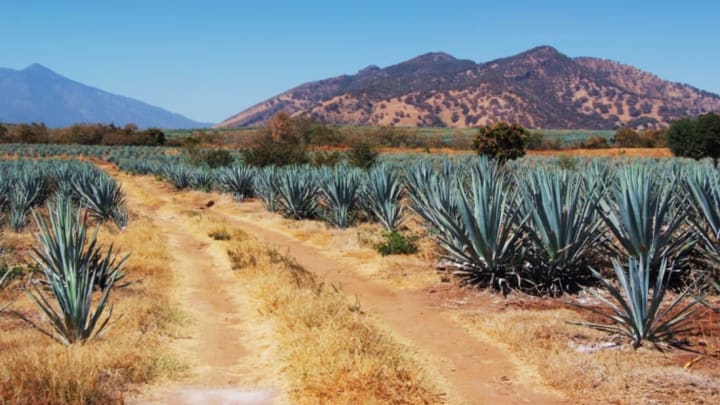Oh, tequila. For many drinkers, the liquor’s name conjures up memories of blurry nights and painful mornings. But to lump all tequilas in with the cheap stuff is to ignore half a millennia of drinking history and some really tasty liquor.
Agave You My Liquor
Under Mexican law, tequila must be made by a Consejo Regulador del Tequila (CRT)-certified location in one of five Mexican states. Most of the 140 odd distilleries that meet these requirements are located in Jalisco.
The spirit must be made from blue Weber agave, and it must be distilled from at least 51 percent agave. This requirement results in two different labels for tequila: mixto and 100 percent agave. Instead of distilling only from agave, mixto tequila is made with agave mixed with sugar from other sources.
Growing agave plants takes a good deal of patience. Despite modern breakthroughs in farming, most agaves are still farmed, tended and harvested by hand. Given that an agave plant traditionally takes 8-12 years to fully grow and mature, it’s not surprising that some tequila makers might choose to add other sugars.
Agave plants are also becoming more difficult to farm. Over the past 15-20 years, says Jose Valdez, Master Distiller for Tequila Partida, “[growing has taken] shorter times—about 6-8 years—due to global climate change, domestication, use of pesticides, [and] abuse of the land and soil, just to name some of the important causes.” This condensed time can cause plants to grow faster while not taking up as many nutrients from the soil. Resulting plants may not have as high of a sugar or acid content, making them less suitable for tequila making.
Roasting time
After the mature agave plants are harvested, the sharp outer leaves are cut off. The heart, or piña, is then roasted at a low temperature to preserve enzymes and break down complex proteins and starches into fermentable sugars.
The plants are then milled with a large stone mill to separate the ropy pulp from the sweet juice called the mosto. The pulp, or bagazo, is often reused as animal feed, compost material, or fuel, but some producers will add some of the bagazo into the fermentation tanks to give the tequila a stronger agave flavor.
The mosto is then put into a fermentation tank with yeast and allowed to ferment. As the yeast eat the sugar, it is broken down into carbon dioxide and ethylic alcohol, says Valdez. The result from this step is a low alcohol fluid that can be distilled.
Stilled Spirits
At its most simple, distillation is the process of purifying or separating liquids using heat. Alcohol and water boil at approximately 173°F and 212°F, respectively. As the mosto is heated, more alcohol than water will evaporate, and the resulting vapor is collected as it condenses in an externally cooled pipe.
Most tequilas are distilled twice. It can be distilled more times, but becomes much more neutral and can lose its flavor and personality, says Valdez. Under Mexican law, producers can add artificial flavoring or coloring to make the tequila more consistent.
Age and Beauty
If you’ve been to your local liquor store, chances are that you’ve seen many different types of tequila that vary substantially in color and price. The most common are blanco (white), plata (silver), joven (young), oro (gold), reposado (rested), añejo (old), or extra-añejo (extra old). Blanco tequila is aged for no more than 60 days, and is often not aged at all. Oro tequilas are usually un-aged as well, but are often artificially colored mixtos. Reposado tequilas are aged for at least 2 months in wood, while añejo tequilas must age for at least a year. For a tequila to be extra-añejo, it must be aged for at least 3 years; this is the newest designation.
Hit The Lab
With National Margarita Day coming up on 2/22, it’s the perfect time to cozy up with a margarita. Like many other cocktails, this drink’s history is murky at best. It first shows up in the 1940s, but didn’t really become popular until the '70s.
If you’re not sure about whether or not to use salt with your beverage, check out its taste benefits. Or just experiment with it—it’s all about what tastes best to you.
Margarita
2 oz tequila
1/2 -1 oz Cointreau, triple sec, or dry curacao (to taste)
3/4-1 oz lime juice (to taste)
1/2 – 1/4 oz simple syrup (also to taste)
Lime wedge, for garnish
Mix all ingredients in a cocktail shaker. Add ice and shake vigorously for 15-20 seconds or until chilled through. Strain into a chilled glass with a salted rim (if you please).
